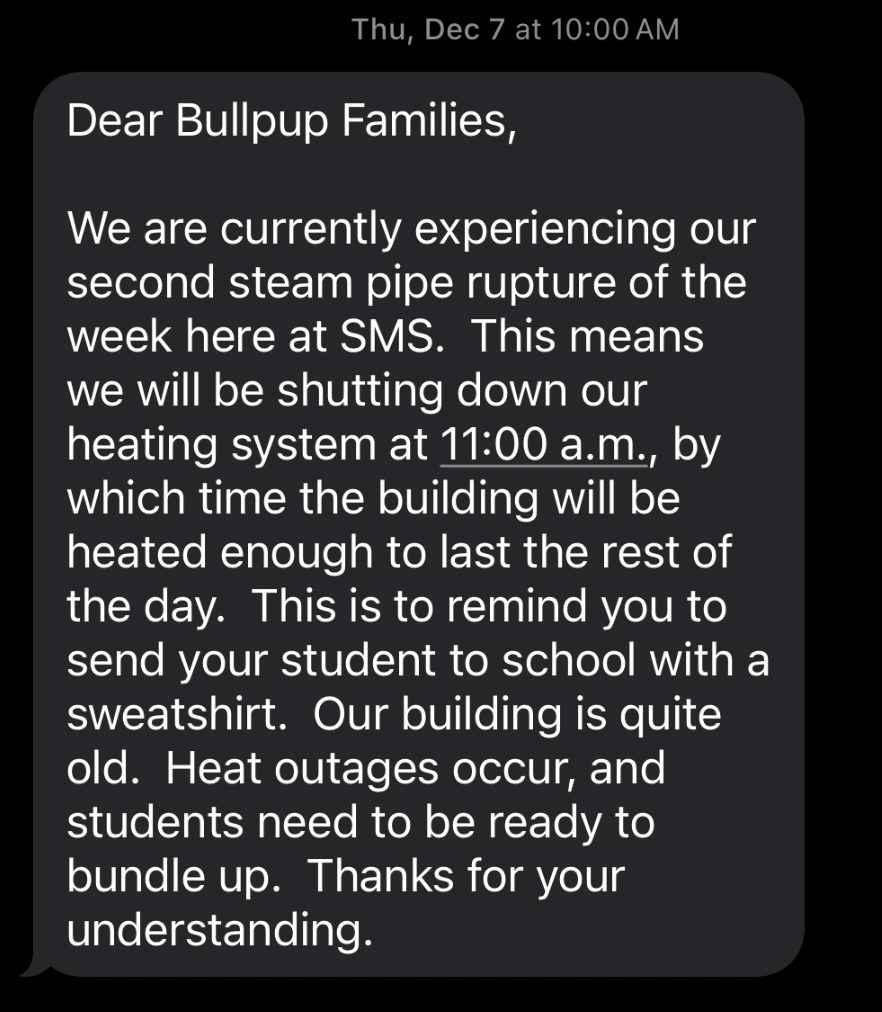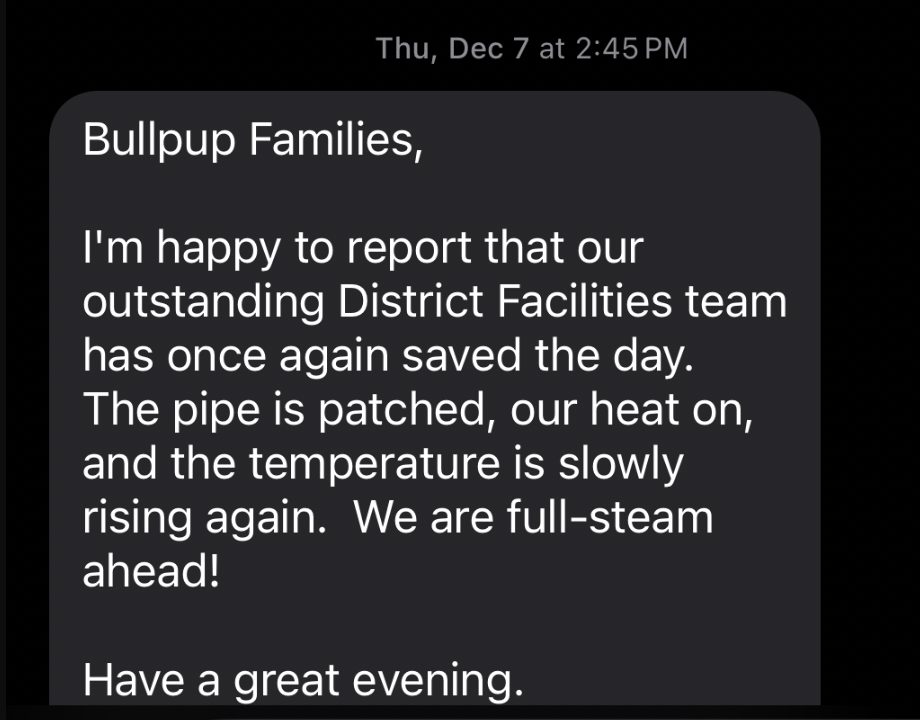A series of major maintenance issues have derailed learning at Sandpoint Middle School over the past three months.

In early December, a steam pipe ruptured, threatening the heating system. The crisis was averted when the facilities team patched the pipe within hours.
The next week, a break in the main water supply line beneath the school caused flooding in the building’s mechanical tunnels and boiler room. School was canceled for two days until the issue could be resolved.
Then, in mid-February, a water line in the ceiling near the school’s lunchroom “sprung a leak,” and the building was closed for another two days (this time, students learned remotely or at the high school).
“I know this process has been inconvenient and interrupted vital student learning time, but I appreciate your patience as we ensured a safe learning environment for all students,” Becky Meyer, the superintendent of Lake Pend Oreille School District, wrote in a message to parents.
Scroll to the bottom of the story to see a detailed timeline of the issues at Sandpoint Middle.
The string of breaks and leaks comes as the Legislature is accelerating a facilities bill that would direct $2 billion (and $1.5 billion in new funding) to constructing and maintaining public school buildings.
If passed, it would mean about $14.7 million for Lake Pend Oreille.
“That’s not insignificant,” Brian Wallace, the district’s chief financial and operations officer, said at a Feb. 13 regular board meeting. He called it the “biggest pro-facility legislation that’s come out from the Legislature, ever.”
The funds would help “address our aging facilities and mechanical systems,” Annie Kuster, the district’s community relations liaison, wrote in an email. “There is a large amount of deferred maintenance issues in our schools.”
Sandpoint Middle School was built in 1953 (with some classrooms added on in the decades to come). The district hasn’t passed a bond since that same time period, about 70 years ago.
The district has put four plant facilities levies on the ballot since 2006, with just one passing in 2008 for $7 million. The most recent, a 2016 plant facility levy ask of $8.7 million, failed.
For a primer on the difference between bonds and levies and what they pay for, go here.
The district does have a long range facility planning committee comprised of parents, community members, and staff that meets monthly to “develop a proposed plan addressing deficient and unsafe building conditions within the school district.”
A draft timeline created by the group indicates that the end result may be suggesting a possible bond or levy election in May 2025.
In a video, Meyer said the committee will work to answer this question: “What is it that we need to do as a community to help make our buildings safe and make sure that it’s the best place for kids to learn?”
Districts across the state have been looking to similar committees to steer next steps for building maintenance and construction, including Pocatello/Chubbuck, where trustees are considering how to rebuild a fire-damaged school, and Salmon, where trustees are planning to run a bond to replace a school with a cracked foundation and other serious issues.
Sandpoint Middle School closed its doors for four days this school year due to major disrepairs. Here’s a timeline of what happened:
- Steam pipe rupture, Dec. 7: A steam pipe ruptures for the second time that week, threatening the school’s heating system. The district’s facilities team patches the pipe later that day and heat is restored after being turned off. “Send your student to school with a sweatshirt,” the Sandpoint Middle principal wrote in a message to parents.
-
- Water line break and school cancellation, Dec. 11-12: The school’s water supply line beneath the building breaks, resulting in flooding of portions of the building’s mechanical tunnels and boiler room. School is closed for two days while the issue is addressed.
- Water line break, Feb. 13: A water line above the hallway ceiling in front of the lunchroom springs a leak. While beginning repairs, the facilities crew discovered newly-uncovered insulation that potentially contained asbestos. “Out of an abundance of caution, we have completely sealed off the hallway” until an expert can assess the situation and send a sample of the insulation to a lab for testing, a district communication to parents read. Air samples are also taken.
- Middle school breakfasts, lunches, and physical education classes were moved to Sandpoint High.
- Building closure/hybrid learning, Feb. 14-15: Sandpoint Middle closes its doors as school leaders await asbestos test results. On Feb. 14, Sandpoint Middle students learned remotely. On Feb. 15, they learned in person at Sandpoint High, while the high school students learned remotely.
- Building reopens, Feb. 20: Test results come in and school leaders “are happy to report that the building is safe for occupancy,” a Feb. 19 message to parents says. “I know this process has been inconvenient and interrupted vital student learning time, but I appreciate your patience as we ensured a safe learning environment for all students,” Superintendent Becky Meyer wrote to parents. Read the school district’s full communications with parents here.
Idaho Education News data analyst Randy Schrader contributed to this report.


